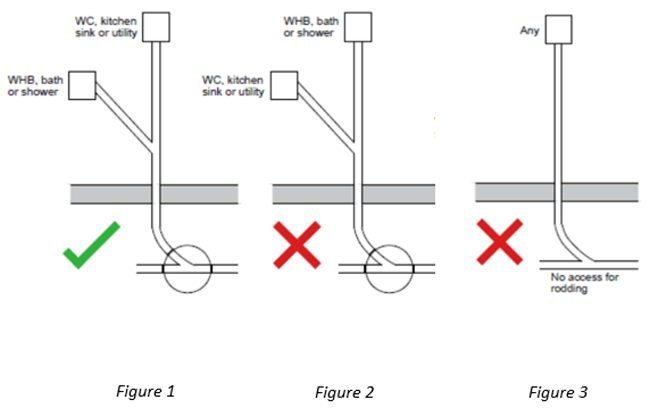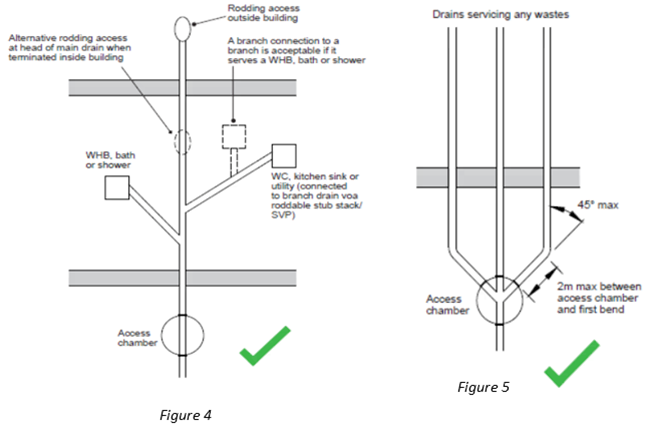Download a PDF version of this article.
This update provides additional guidance relating to how the Functional Requirements in the Technical Manual may be satisfied where Y-junctions are proposed under buildings.
Drains under a building must be laid in straight runs – slight curves can be accepted, providing the length of the run can be effectively cleaned by the use of rods. Having Y-Junctions under a building makes it difficult to clear any blockages, however we can accept them in some very limited circumstances.
Drains carrying heavily soiled waste (kitchen sink, WC, washing machine etc.) should not be connected via Y-Junctions under a building as maintenance will be difficult (Figure 2/3 below). They should be in straight runs to an access point outside the building to allow the drain to be rodded. If Y-Junctions are used, they should only be used in the circumstances shown below:


External access chambers can serve up to three branch drains provided the angles of the connections, bends and distance from the first bend comply with Figure 5.
This technical document has provided guidance on where Y-Junctions can be used, if possible, they should be avoided as they makes it difficult to clear blockages, however if they are proposed, they should only be used in the circumstances highlighted above.
Read more articles on the Resource Hub and sign up to receive our blog round-up.
Every care was taken to ensure the information in this article was correct at the time of publication. Guidance provided does not replace the reader’s professional judgement and any construction project should comply with the relevant Building Regulations or applicable technical standards. For the most up to date Premier Guarantee technical guidance please refer to your Risk Management Surveyor and the latest version of the Premier Guarantee Technical Manual.